Table of Contents

Cockatiels are popular pet birds known for their charming personalities and beautiful plumage. Among the various types of cockatiels, in this post you will Discover the 7 Rarest Cockatiel Varieties: What Makes Them Unique? seven rarer than others due to their unique color mutations and limited availability. Understanding which cockatiels are the rarest can help enthusiasts appreciate these special birds even more. In this post, we’ll explore the rarest cockatiel birds, why they are so unique, and what makes them stand out from the more common varieties.
1-What Makes a Cockatiel Rare?

The rarity of a cockatiel often depends on its color mutation, which is a genetic variation that results in different feather colors and patterns. Some color mutations are naturally less common because they require specific genetic combinations. Breeders may also find it challenging to produce these mutations consistently, adding to their rarity. Additionally, the demand for rare cockatiels can drive up their value, making them sought after by collectors and enthusiasts alike. Understanding these factors can help you identify and appreciate rare cockatiel birds.
2-The Elusive Albino Cockatiel

The Albino cockatiel is one of the rarest and most striking color mutations. These birds have pure white feathers and red or pink eyes, giving them a unique and ethereal appearance. The Albino mutation occurs when a cockatiel inherits two copies of the recessive gene for both the Lutino and Whiteface mutations. This combination is challenging to achieve, making Albino cockatiels very rare. Due to their unique appearance and the difficulty in breeding them, Albino cockatiels are highly prized among bird enthusiasts.
3-The Beautiful and Rare Pearl Cockatiel
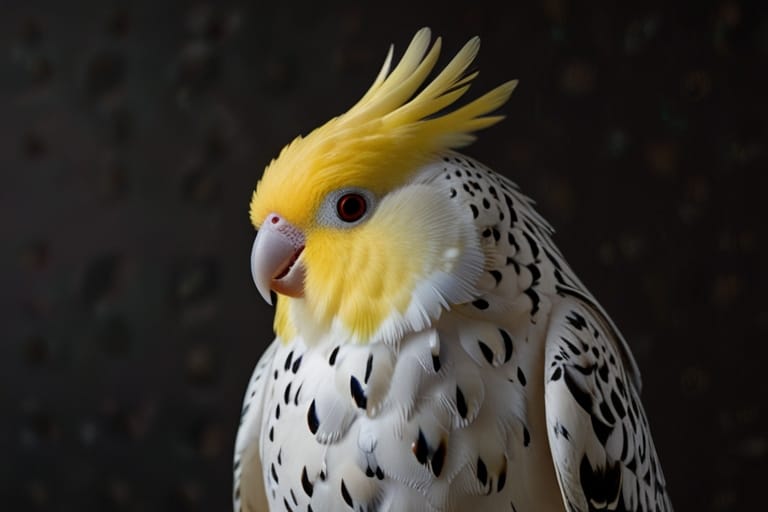
Pearl cockatiels are known for their distinctive, speckled feather pattern, which appears as spots or “pearls” across their wings and back. This mutation is sex-linked, meaning it’s passed down from parents to offspring in a specific way. Pearl cockatiels are relatively rare, especially in males, as they often lose their pearl pattern as they mature. The rarity and beauty of this pattern make Pearl cockatiels a favorite among breeders and collectors who appreciate their intricate and delicate appearance.
4-The Unique Pied Cockatiel

The Pied cockatiel is another rare and beautiful mutation, characterized by patches of colorless (white or yellow) feathers mixed with the bird’s normal coloration. No two Pied cockatiels look exactly alike, as the pattern and distribution of the colored and uncolored feathers vary widely. This unpredictability adds to their charm and rarity. Pied cockatiels are highly sought after for their unique appearance, and their rarity is increased by the fact that producing specific Pied patterns can be challenging for breeders.
5-The Stunning Lutino Cockatiel

Lutino cockatiels are known for their bright yellow feathers and striking red eyes, making them one of the most visually stunning cockatiel mutations. The Lutino mutation removes all dark pigmentation, resulting in a bird with entirely yellow or pale-colored feathers. While Lutinos are more common than some other mutations, true Lutino cockatiels with no traces of dark feathers are considered rare. Their vibrant color and unique appearance make them a popular choice among bird lovers who appreciate their distinctive look.
6-The Rare Cinnamon Cockatiel
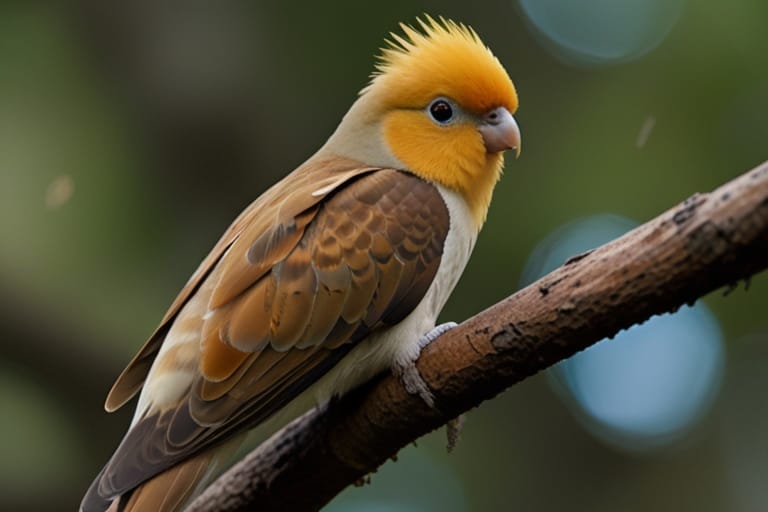
The Cinnamon cockatiel has a soft, warm brown coloration instead of the standard gray. This color mutation is caused by a recessive gene that affects the bird’s melanin production, resulting in its unique cinnamon shade. Cinnamon cockatiels are relatively rare, especially when combined with other mutations like Pearl or Pied. Their gentle, earthy tones are highly attractive to those who prefer more subdued colors, and their rarity makes them a prized addition to any bird collection.
7-The Exquisite Fallow Cockatiel

The Fallow cockatiel is one of the rarer and more unusual mutations. These birds have light brown or golden feathers, with pinkish eyes that give them a soft, delicate appearance. The Fallow mutation is rare because it requires both parents to carry the recessive gene for this trait. Fallow cockatiels are often mistaken for Cinnamon or Lutino cockatiels due to their similar coloration, but their unique eye color and softer feather tones set them apart. Their rarity and gentle appearance make them a favorite among experienced breeders.
8-The Rare Silver Cockatiel

Silver cockatiels are among the rarest and most beautiful of all cockatiel mutations. Their feathers have a shimmering, silvery-gray hue, and they often have lighter or even white faces. The Silver mutation is difficult to breed, as it requires specific genetic combinations, making these birds highly sought after by enthusiasts. The rarity and elegance of Silver cockatiels, combined with their unique appearance, make them a treasured addition to any aviary or bird collection.
Caring for Your Cockatiel in a Cage: A Complete Guide
9-The Importance of Ethical Breeding
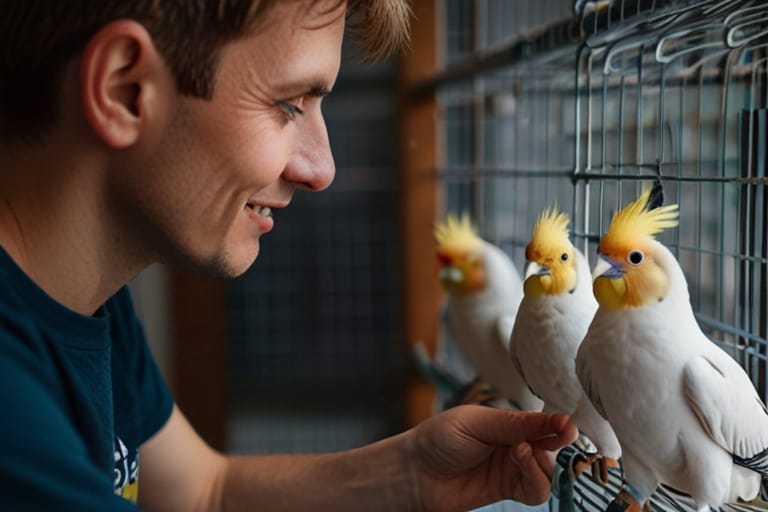
When searching for rare cockatiels, it’s important to support ethical breeders who prioritize the health and well-being of the birds over profit. Ethical breeders ensure that their birds are well-cared for and that rare mutations are bred responsibly to maintain genetic diversity and avoid health issues. Be wary of breeders who focus solely on producing rare birds at the expense of the birds’ health. By choosing an ethical breeder, you can enjoy the beauty of a rare cockatiel while supporting responsible bird breeding practices.
10-Caring for a Rare Cockatiel
Owning a rare cockatiel comes with the responsibility of providing the best care possible. Rare cockatiels may have specific needs due to their genetic mutations, so it’s important to educate yourself on their care requirements. Regular vet check-ups, a balanced diet, and a stimulating environment are essential to keeping your rare cockatiel healthy and happy. Additionally, ensure that your bird has plenty of social interaction to prevent loneliness and boredom. Proper care will help your rare cockatiel thrive and live a long, healthy life.
11-Final Thoughts on Rare Cockatiel Birds
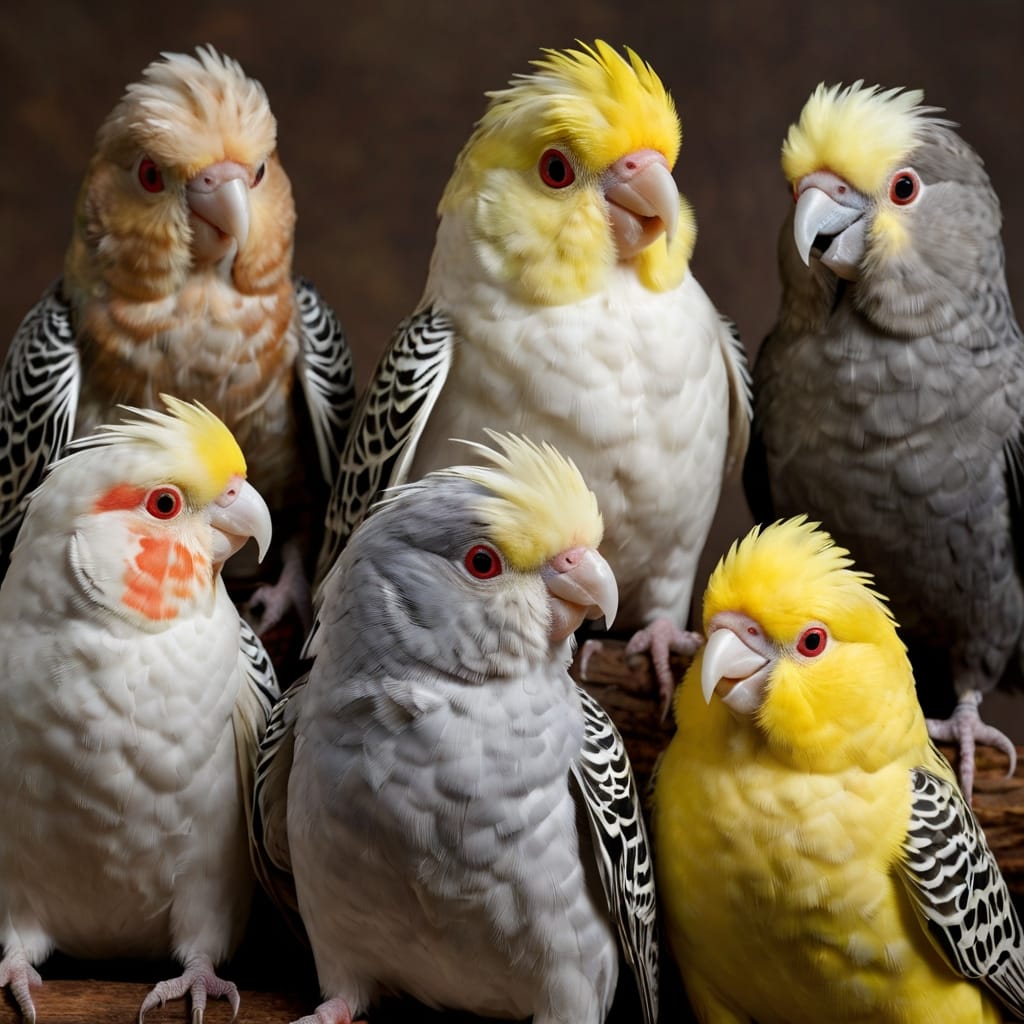
Rare cockatiels are not just beautiful and unique; they are also a testament to the incredible diversity within the cockatiel species. Whether you’re drawn to the striking Albino or the subtle beauty of the Cinnamon, owning a rare cockatiel can be a deeply rewarding experience. However, it’s important to approach rare bird ownership with knowledge and responsibility. By understanding the needs and challenges of rare cockatiels, you can ensure that your bird is not only a stunning companion but also a healthy and happy one.
watch this video YouTube about various types of cockatiels YouTube









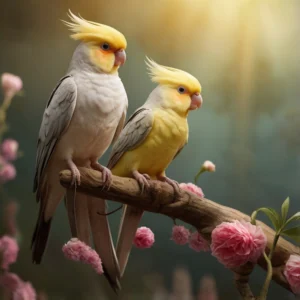

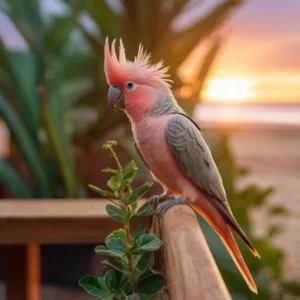
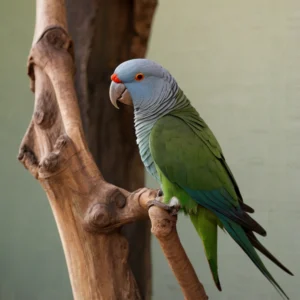
2 Comments
[…] Q3: How can I identify a rare cockatiel color?Rare cockatiel colors, like albino or cinnamon, are identified by unique features such as all-white feathers, red eyes, or soft brown tones. you can find different types of cockatiel Here […]
[…] In the wild, ringneck parrots are listed as “Least Concern” by the IUCN due to their large population and adaptability to urban areas. They are native to Asia and Africa but have been introduced in various parts of Europe and North America, where they have formed stable feral populations. Despite their adaptability, habitat loss remains a concern. Their population thrives due to their flexibility in diet and habitat preferences, but ongoing urban development could impact their numbers in certain regions, you can find the rarest bird in this post […]